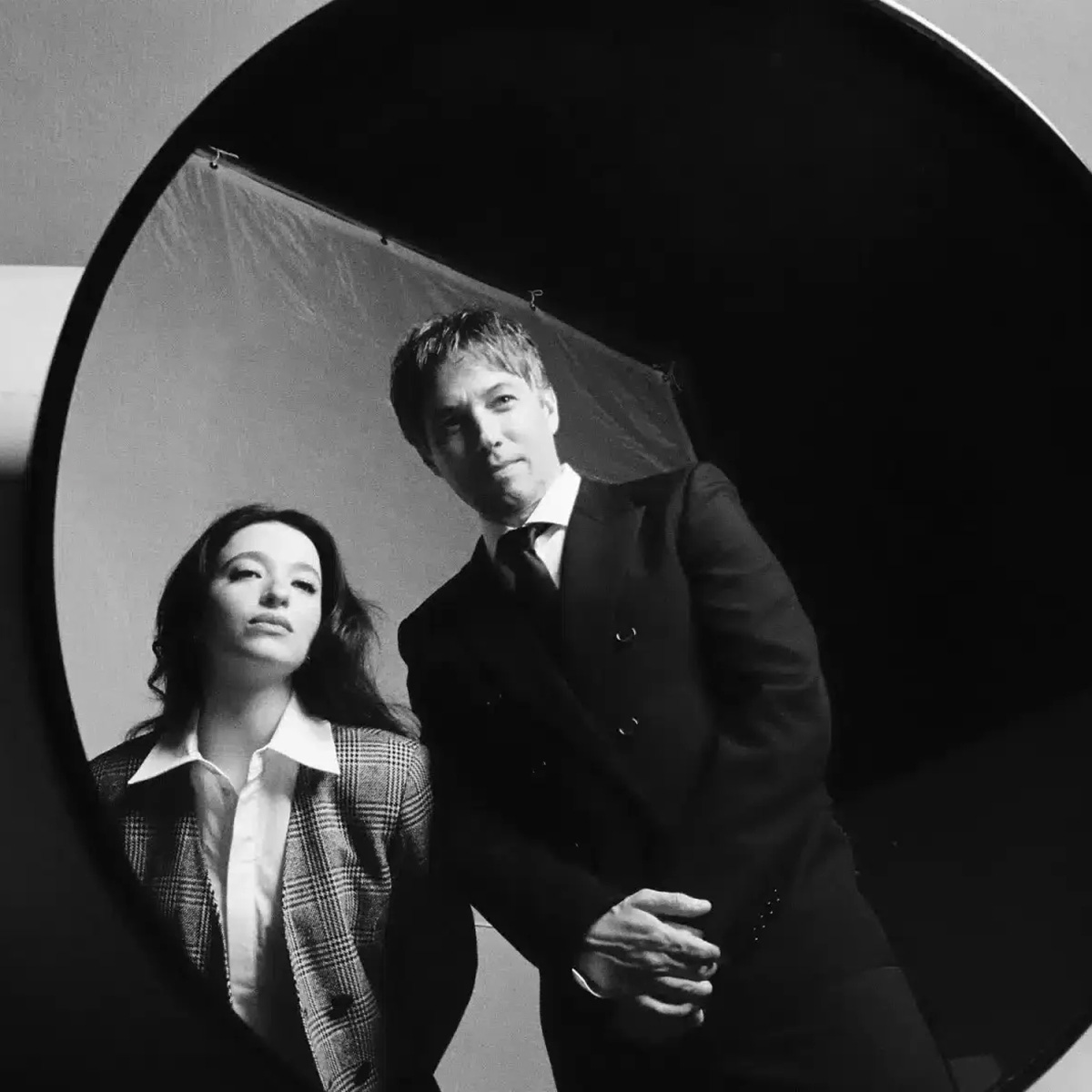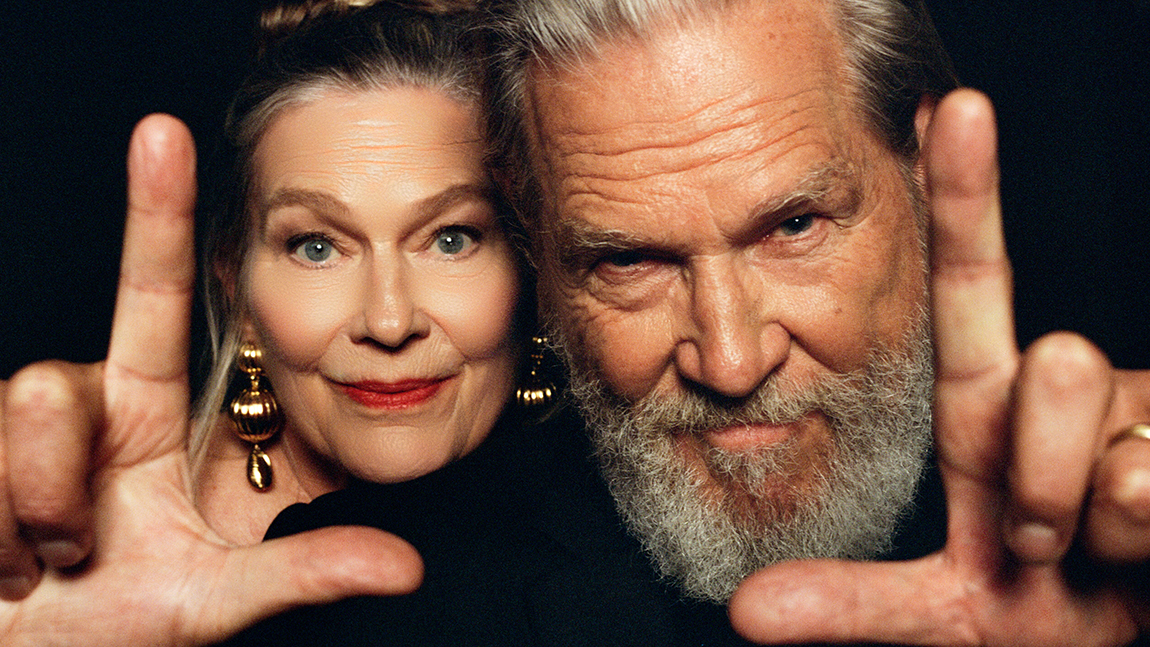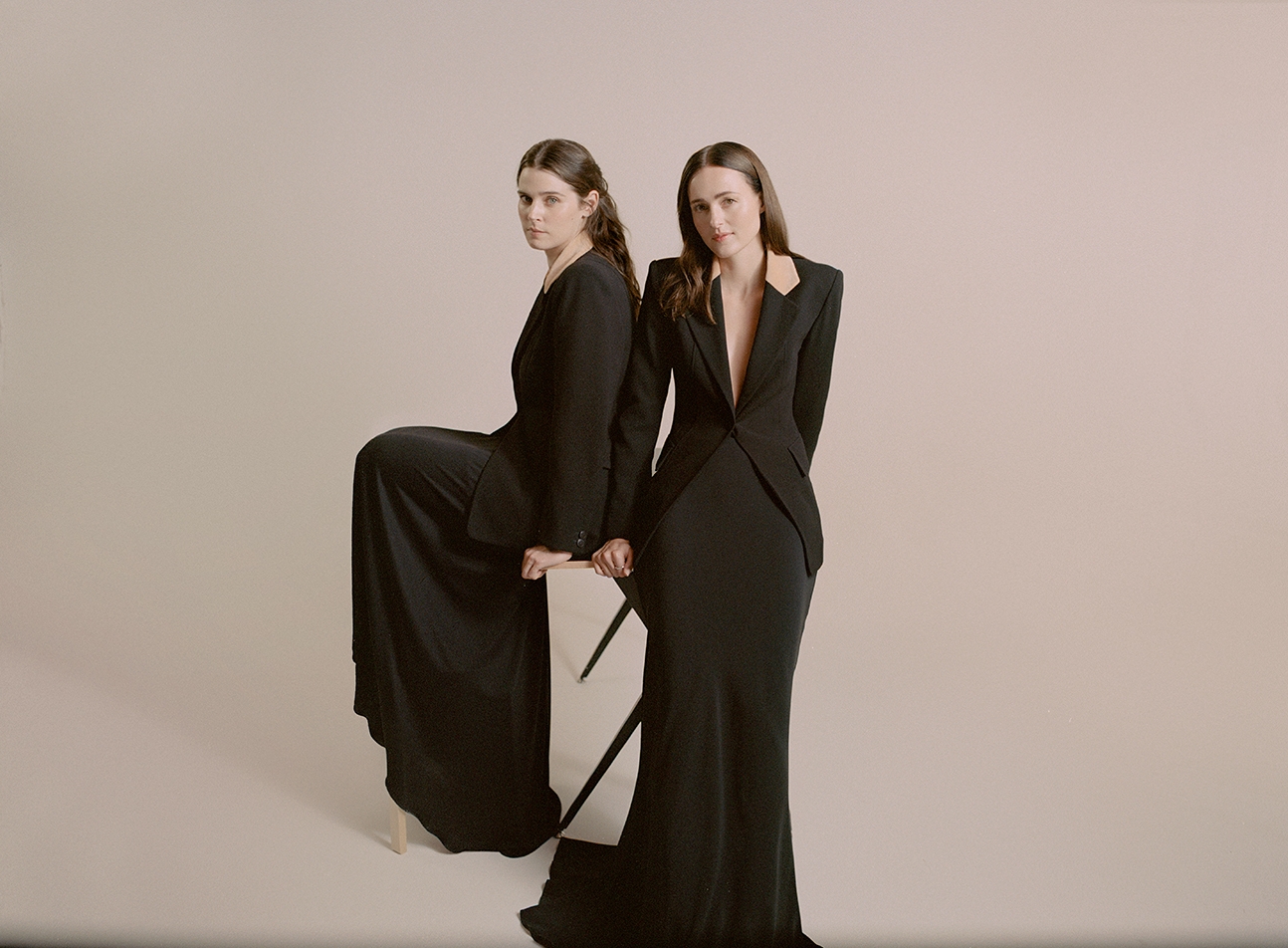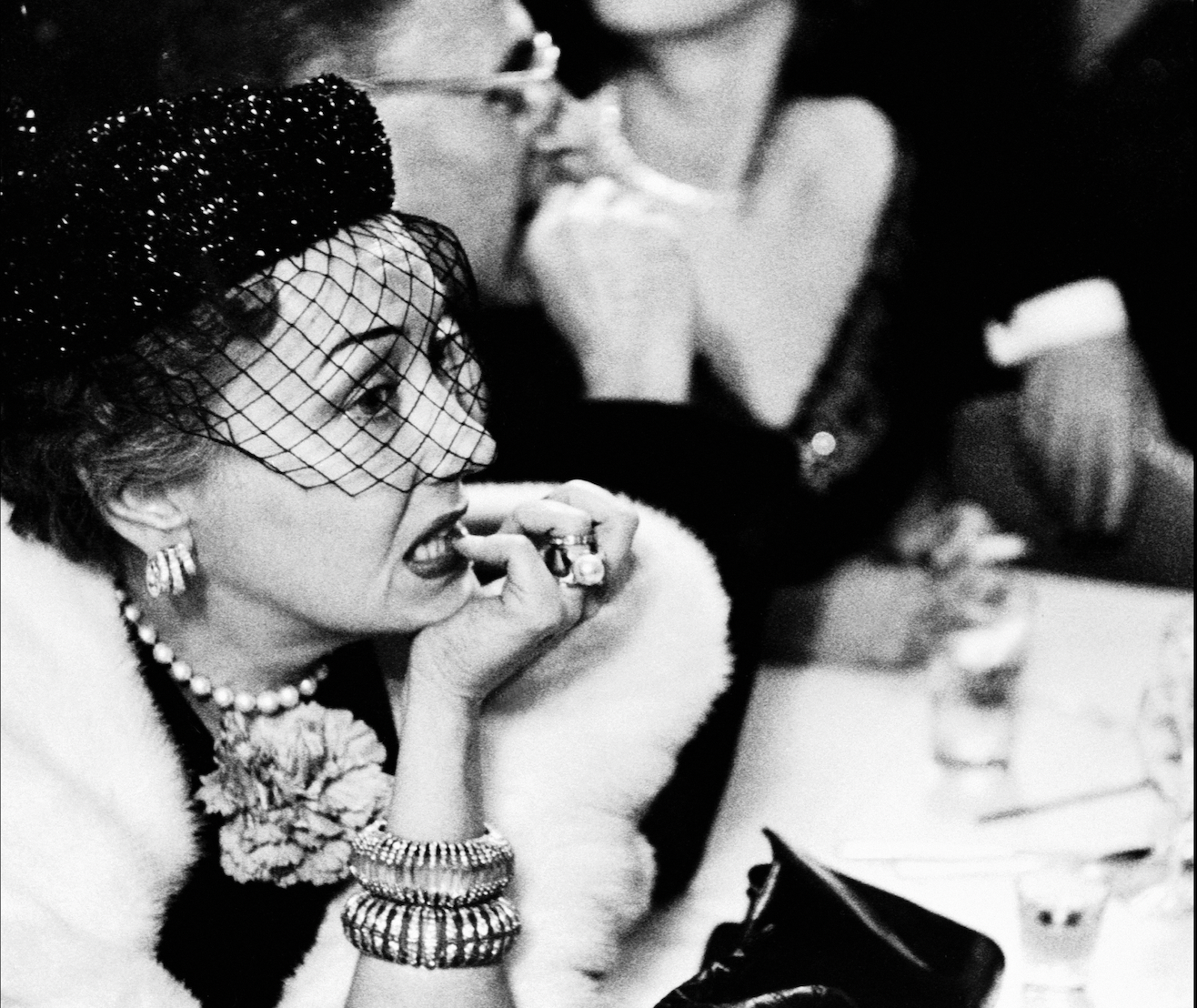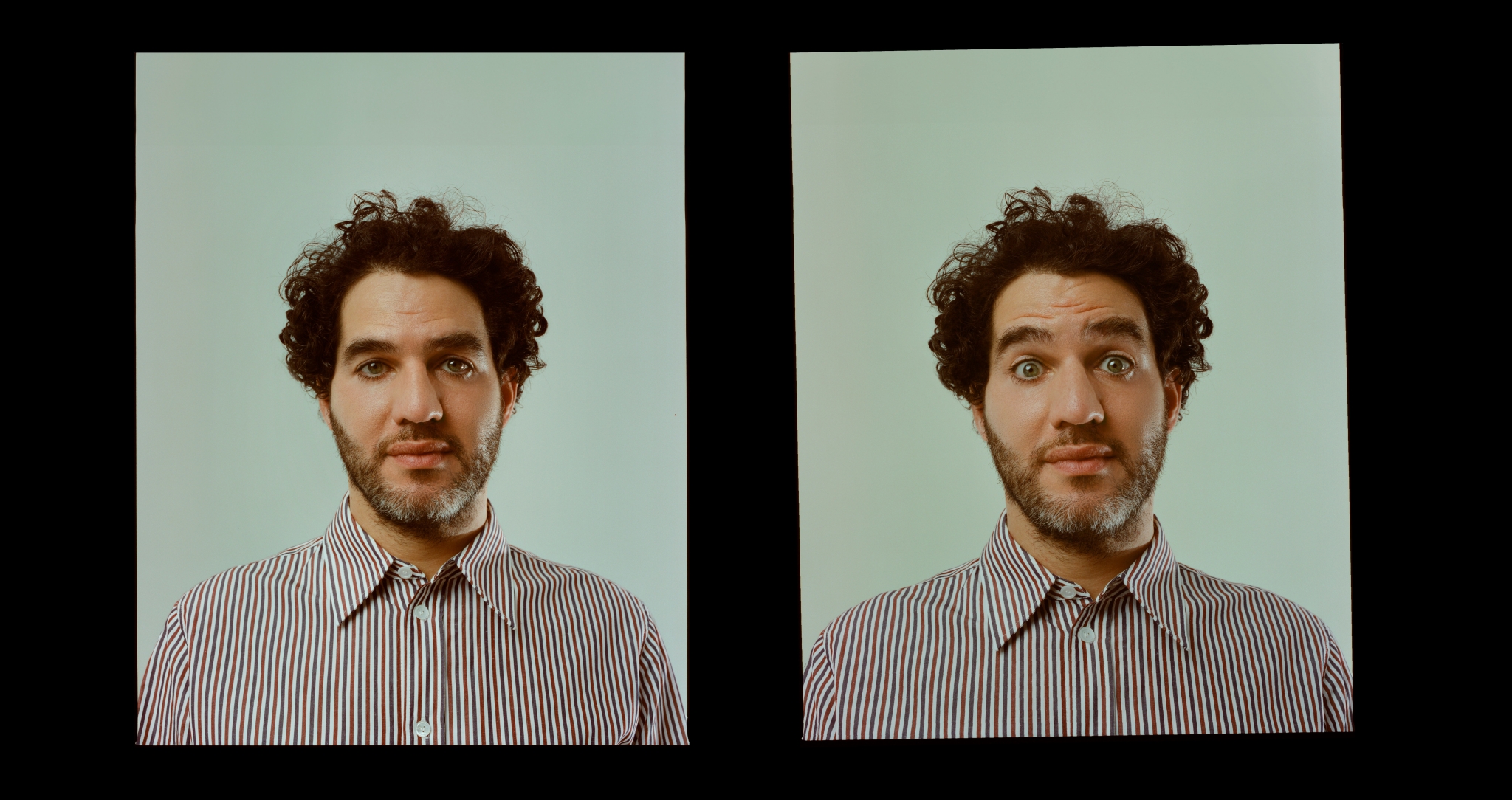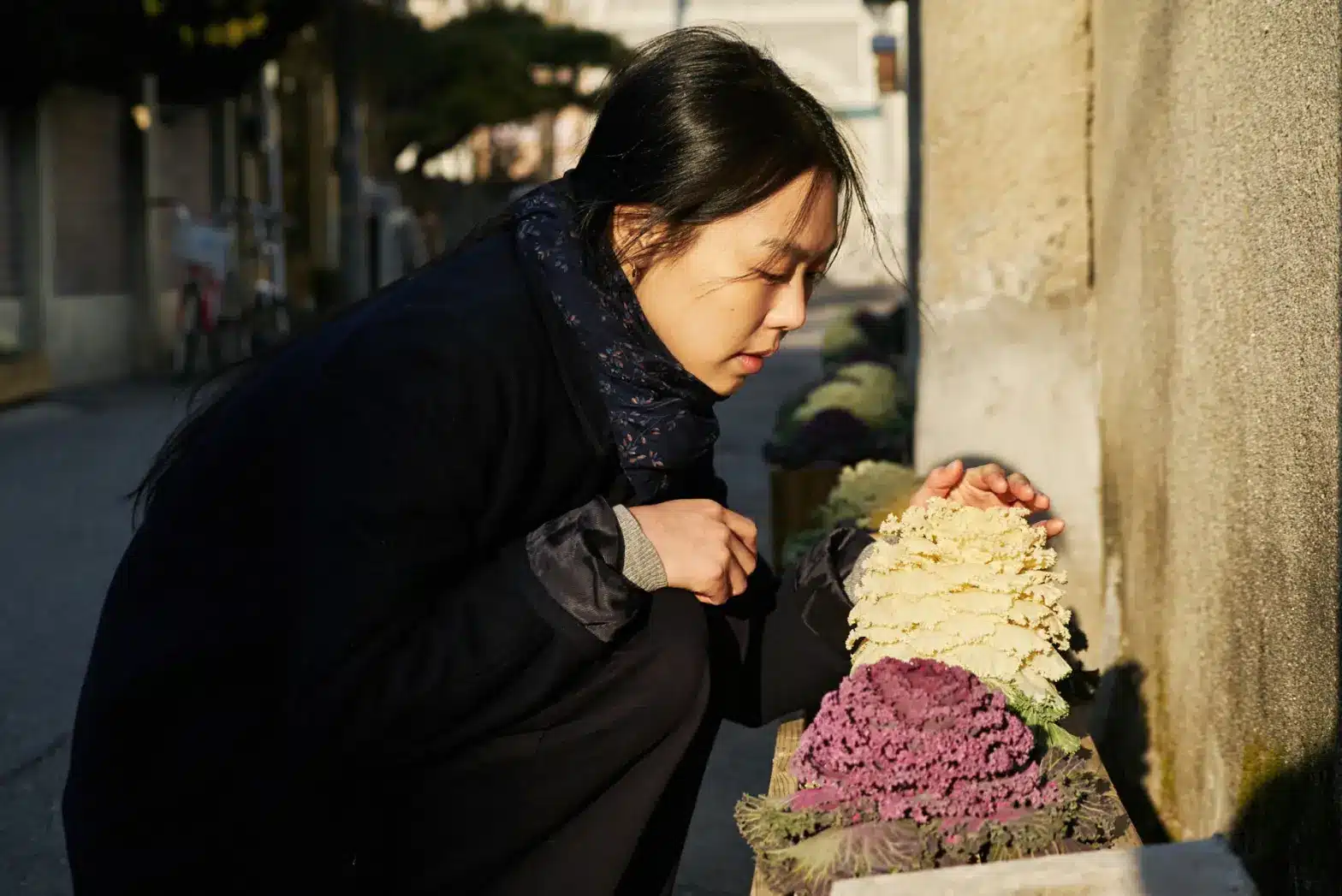
As a new retrospective of Hong Sang-soo’s work takes place, Cici Peng considers the centrifugal, but underlooked force of Kim Min-hee in the work of the South Korean auteur.
The signature tableau of a Hong Sang-soo film is a man and woman sitting together at a meal, often a lauded male film director and his younger female admirer or muse, drinking soju, makgeolli or wine (Hong and his actors are known to drink on set, and have admitted to the pleasures of working in this way). In this state between sobriety and drunkenness, there will be a kind of turn from a banal, awkward conversion to a raw, direct one. These men and women linger on the edge of breakdown or the cusp of a budding romance. Hong plays into these uneven power dynamics and the crisis of the male ego at the heart of these interactions. The South Korean director said in a 2006 interview: “Men embrace women thinking that she is the only saviour, but are nervous because they can already visualise the end even with their eyes closed.”
However, in 2009, Hong shifted gears with Lost in the Mountains, telling a story from solely a female point of view. Hong’s work after this period approaches his heroines in a striking way—at first they seem to be tangled in a traditional patriarchal binary of muse or lover, but latently, one observes his female character’s complexity, their dreams, desires and insecurities, while navigating the projections of male desire.

RIGHT NOW, WRONG THEN (2015), DIRECTED BY HONG SANG-SOO
Hong has consistently been framed as a singular kind of auteur, known for making work quickly, usually releasing two films a year as well as his unusual production methods, composing the day’s script on the morning of the shoot. Working with a single low-res camera, and a minimal crew, Hong takes on the role of writer, editor and director, and oftentimes cinematographer. As a result, the works are intimate and formally striking, with an emphasis on long, revealing dialogues. Because of their production methods, many of his works echo one another in theme and mood, and as a result, Dennis Lim writes in his monograph, Tale of Cinema (2022) that “the meaning and pleasures [of Hong’s films] are cumulative”.
As Hong’s singular structural approach has been written about countless times, I want to take a different angle here—one that insists on the collaboration between him and his longtime actress and romantic partner Kim Min-hee, who is also a production director on many of his recent works. I am careful to not use the word ‘muse’ when referring to Kim’s roles in Hong’s work—a word that re-animates an uneven power dynamic, relegating women to the sidelines of cinema—especially when Kim is a one of a kind movie-star auteur.
Hong and Kim’s relationship began around 2016 and faced the furore of the Korean tabloids, as Hong was married. Both faced criticism for their romance, however, the affair upended Kim’s career, and she was blacklisted from many film studios, even despite her star performance in Park Chan-wook’s The Handmaiden (2017). Since then, she has only starred in Hong’s films. Yet, as the years have passed, there has been little written on the possibility of Kim’s agency, her capacity for refusal, her resistance to working in a misogynistic industry, and selectiveness to her projects. After all, Kim has been lauded with international awards in the past decade for her performances in Hong’s works. Kim’s presence lends Hong’s films a uniting centrifugal force – she walks across them, she sits alongside a stream lost in thought, she naps on a cold winter beach. In these moments of observation, Kim’s presence holds the time of the film—sometimes literally breaking the temporal linearity of the narrative.

RIGHT NOW, WRONG THEN (2015)
In their first collaboration, Right Now, Wrong Then (2015), Hong structures the film in his distinct diptych style, with Part Two replaying Part One with almost the exact same narrative structure in a Groundhog-Day repetition. However, the slight but significant variations create an entirely new outcome for the could-be romantic protagonists. The film follows the arrival of Ham Cheon-soo (Jeong Jae-yeong), a revered filmmaker, in Suyon, a small town in South Korea, for a retrospective of his work. Arriving a day early by accident, he has time to kill and visits a temple where he meets local painter Yoon Hee-jeong (Kim Min-hee), who he attempts to seduce.
Part One is satirical in its exploration of a courtship with various power dynamics—the older established filmmaker leers and praises a young female artist, who is more hesitant and insecure about her own artistic credibility. At a dinner party towards the end of this section, it’s revealed that Director Han’s compliment to Hee-jeong for her painting was directly lifted from a film review of his own work. Then, another guest reveals that he’s married. Hee-jeong, shocked and jarred, veers away.
Kim’s presence lends Hong’s films a uniting centrifugal force – she walks across them, she sits alongside a stream lost in thought, she naps on a cold winter beach. In these moments of observation, Kim’s presence holds the time of the film—sometimes literally breaking the temporal linearity of the narrative.
Cici Peng
At the beginning of Act Two, Hong troubles Director Han’s position as the protagonist, stripping away his voiceover from the first section. Upon a second-viewing, not only do the audience possess another layer of dramatic irony, but Hong edited Part One and played it to the actors, so they were aware of their characters’ other multiverse before performing the next iteration. In Part Two, Kim Min-hee’s performance is electric, as she self-reflexively plays into the naiveté and coyness of the pursued with a purposeful sense of déjà-vu. In Part One, when the Director praises her painting, she demurely nods and coalesces. Kim is framed from either side by a male gaze —Hong’s camera’s gaze parallel to Han’s.
In Part Two, contrastingly, Han is more critical of Jeon-im’s painting. He calls it “conventional” and a reflection of her lost state as an artist. As a result, she berates him, “How could you be so blunt about other people’s work?” Here, the camera is positioned at a 45-degree angle to both of them, revealing their positions more symmetrically. Despite this dramatic confrontation, the moment reveals a greater honesty and agency on both parts—Jeon-im’s character refuses to be relegated to a “conventional” artist, just as Han seems to respect her enough not to lazily regurgitate a line. Like a see-saw wobbling, Hong’s film finds a gentle equilibrium, not the absence of a certain power dynamic, but one in which there’s a temporary rupture, stripping away performativity for moments of unguarded honesty.
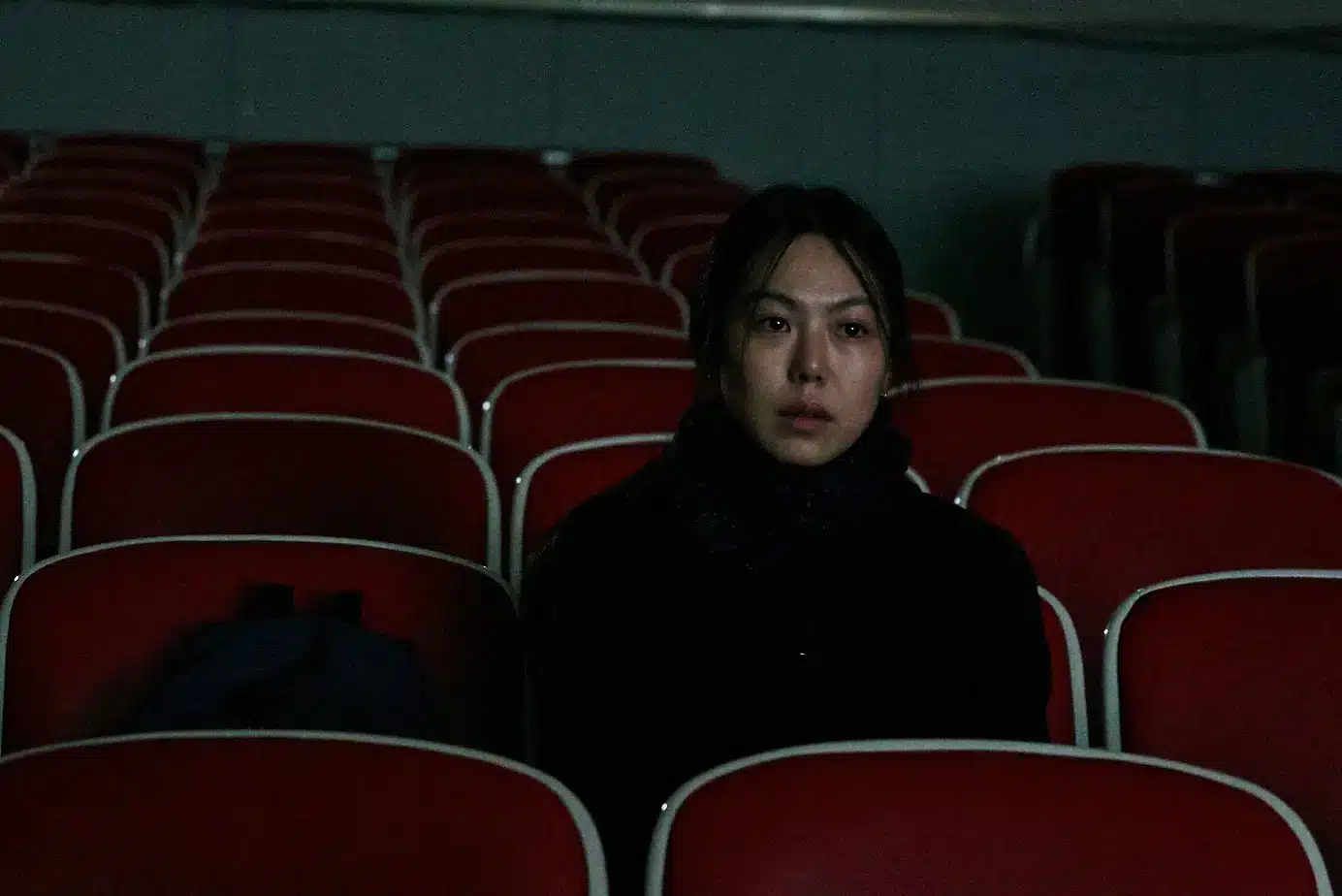
ON THE BEACH AT NIGHT (2017)
On the Beach at Night Alone (2017) is one of Hong’s most contemplative, direct and melancholic works. Hong’s characteristically impotent artist male lead has been sidelined for Kim Min-hee as Young-hee, an actress on hiatus, after a career fall-out as a result of her affair with a famous film director. Provocatively autobiographical, On the Beach is particularly striking in its vulnerable revelation of Young-hee’s loneliness and heartbreak from both the fallout of the relationship and her public cancellation. Yet the film is more interested in observing Younghee’s everyday life and how she navigates her encounters with others with a steadfastness and perspicacity compared to the constantly shifting, and disappointing fragility of the men in her life. Also set in two parts, we follow Younghee’s self-exile to Hamburg, where she spends time with a female friend, and ponders whether her director-lover will visit her. In the longer and more significant second half, she returns to Korea for two fateful reunions—one with friends, another with her former lover.
Part Two begins in a cinema. In Hong’s films, Kim is always leaving a cinema. At the end of Right Now, Wrong Then, Hee-jeong leaves the theatre after seeing Director Han’s film, an end to a similarly elusive romance. In The Woman Who Ran (2020), after Kim Min-hee’s character leaves the cinema, she has a frank conversation with a former friend who is now married to her ex-partner. Leaving the cinema are akin to moments of drinking in Hong’s films, unsettling the boundary between reality and dream-worlds, lending Kim’s character a raw boldness and vulnerability inspired by the possibility of the silver screen.
In On the Beach, Hong zooms out of Younghee’s face as the lights come on, a sequence that lasts for almost two minutes. Despite this observation of the present moment, Kim’s face occupies two modes of time—her bleary red eyes appear lost in another space, another time, a memory that the viewers are denied entry to. Much of the drama is alighted by her sudden move to leave the theatre—almost like a push into the second part of the film. Claire Denis says of Hong’s work that “Women are the axis of time in the film […] Women have their own time span […] It is as though these women are timing the film like a metronome.”
Kim’s performance is spectacular with these constantly shifting emotions shifting across her face like clouds—transient and multiple. In the final dinner sequence, Young-hee is sat with her ex-lover director Sangwon, and the crew for his current film. By staging their first conversation publicly, there is a double exposure, both of the way Hong and Kim’s own relationship has been dissected by the public, and how Young-hee and the director’s dynamic shifts in the presence of other people. While Young-hee seeks assurance of their foregone love, he alternatively seeks affirmation from the others. When the director asks superficially why she is no longer acting, she repeats “I’m a bomb!”, while he sheepishly glances around, “It seems like she’s having a rough day.”
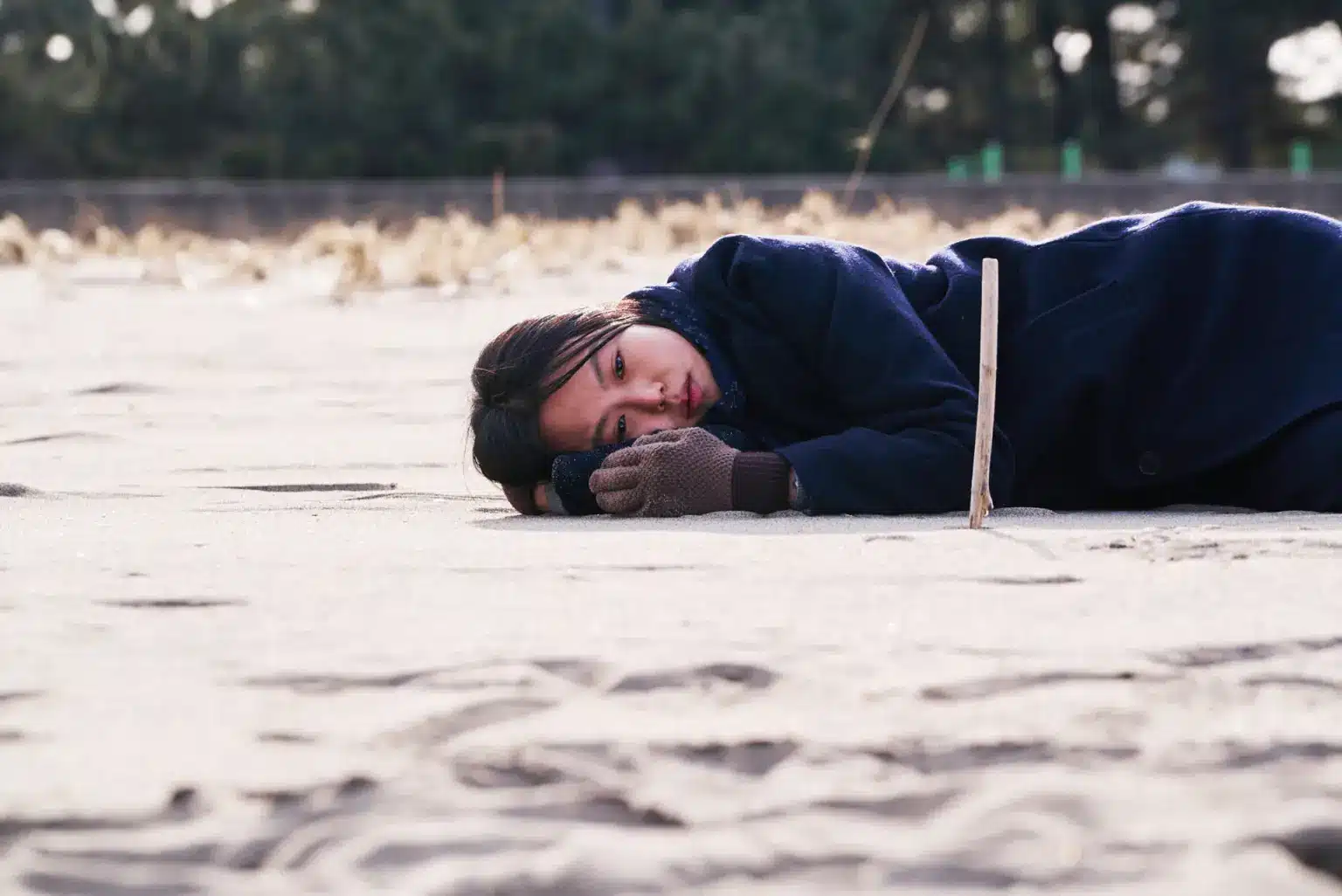
ON THE BEACH AT NIGHT (2017)
Sangwon reads her a passage from a book he’s bought her, but by its poetic end, he looks to his sycophants, who all nod in approval, while he shrinks, cooing “I didn’t read it that well.” Eventually, Sangwon breaks down in tears. Here, the camera zooms out, pulling back to reveal Younghee’s facial expression. Her face is magnificent: at once vulnerable, hurt and tender, before suddenly shifting to contempt and anger, shoulders pulled back. Her face presents a nuanced portrait of a woman struggling to find her place against the betrayals of her lover, and her career. Despite Hong’s attempts at atonement through the contemptuous portrayal of Sangwon, it is Kim’s grace that holds the scene together, avoiding a melodramatic collapse to an emotionally taut finale.
The dinner sequence is structured between two shots of Young-hee’s back turned, lying on the wintry beach, her body horizontal to the ocean. After the dinner sequence, she is awoken by a man passing by. As she stands, the camera pans up to follow her, a cloudless blue sky rising behind her: “I was dreaming”, she says smiling. She looks bigger than life. The dinner may have been a dream, but a cathartic one. The watery ocean becomes a space of slippage, between dream and reality, just as Hong’s cinema lingers between the space of the real and the cinematic.
In his latest film By the Stream (2024), Hong shifts gears, moving into something more structurally loose, where Kim steps beyond her role within men and women’s romantic foibles into something more serene and undefinable. Almost like a loose sequel to Right Now, Wrong Then, Kim Min-hee is now no longer playing the younger, insecure artist from almost a decade ago, but has developed as Jeon-im, an arts professor, who makes her own tapestries inspired by the stream in her small town.

BY THE STREAM (2024)
When a scandal hits the college after a male director dates three female students at the same time, Jeon-im calls her once celebrated actor-director uncle Chu Si-eon (Kwon Hae-hyo) to take the reins on the university play. By the Stream holds one of the most affective sequences in Hong’s entire oeuvre. Si-eon, the celebrated mentor, asks the students to imagine the person they want to be, over a celebratory dinner after the play’s opening night.
The students reply earnestly. One desires to be a person who can give herself up to others, while another asserts, “I won’t stab anyone, no matter how they treat me.” Rather than outward-looking ambitions of success, their desires look inwards for transformation, reflective of a radical form of self-love that has rarely appeared in the Hong universe. Again, women have their own timelines, but ones that are invisible, a temporality that cannot be captured with a camera or by an audience’s naked eye.
During this sequence, Jeon-im is absent. Instead, she walks under a grand tree, with drooping, wide yellow leaves. She picks one up from the ground beneath her, fanning it back and forth – a moment of total serenity, evocatively framing Kim Min-hee’s striking beauty, especially captured on Hong’s low-res camera. Perhaps, Hong is marking the transformation of his consistent protagonist. No longer concerned with the inconsequential male amorists, she has found a form of peace, one that her female students aspire to, a dream that feels more profound and radical than any other.
The Human Comedy: The Cinema of Hong Sang-soo is on at the ICA until 8th December.
Main image: On the Beach at Night (2017), dir Hong Sang-soo

